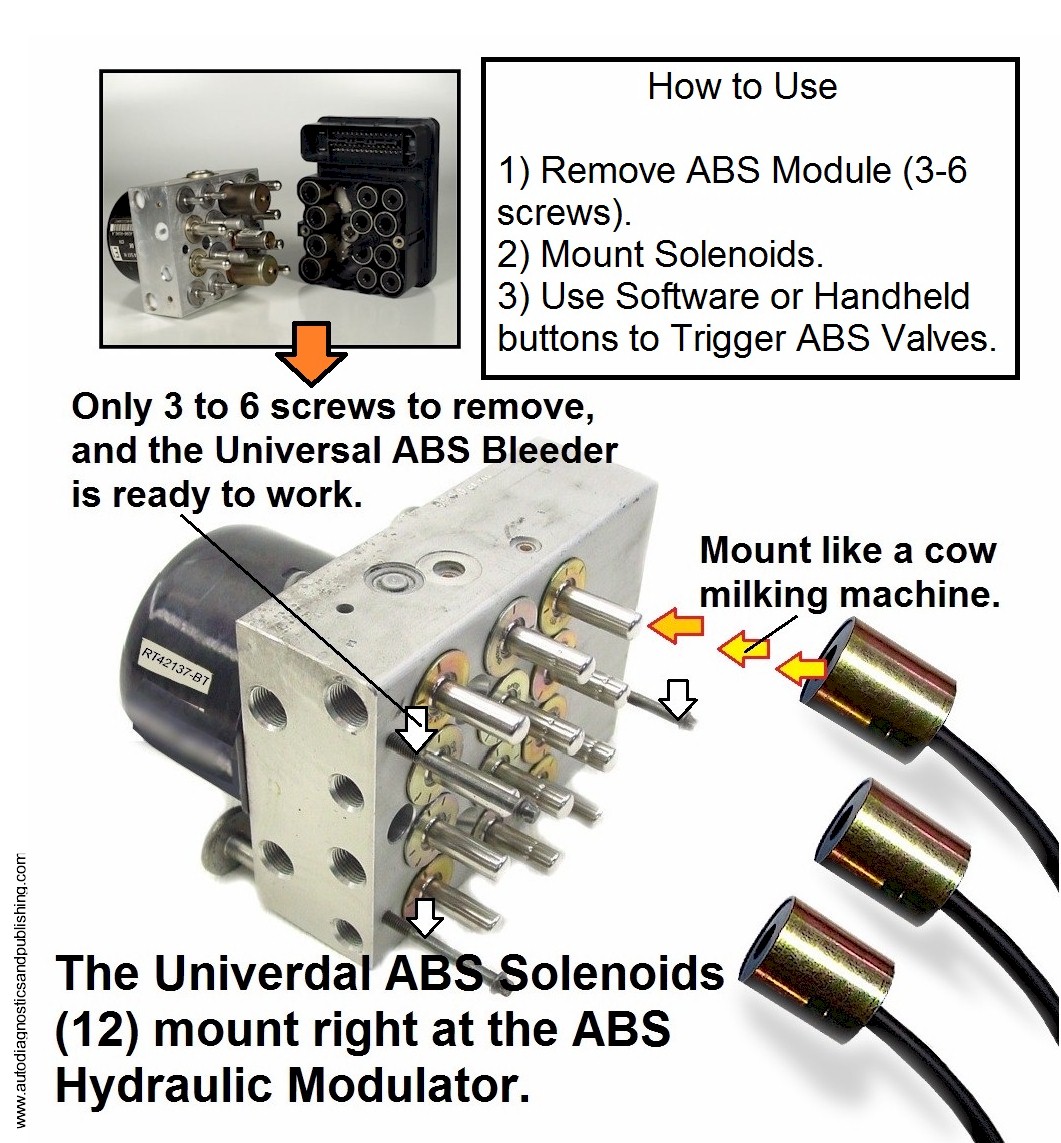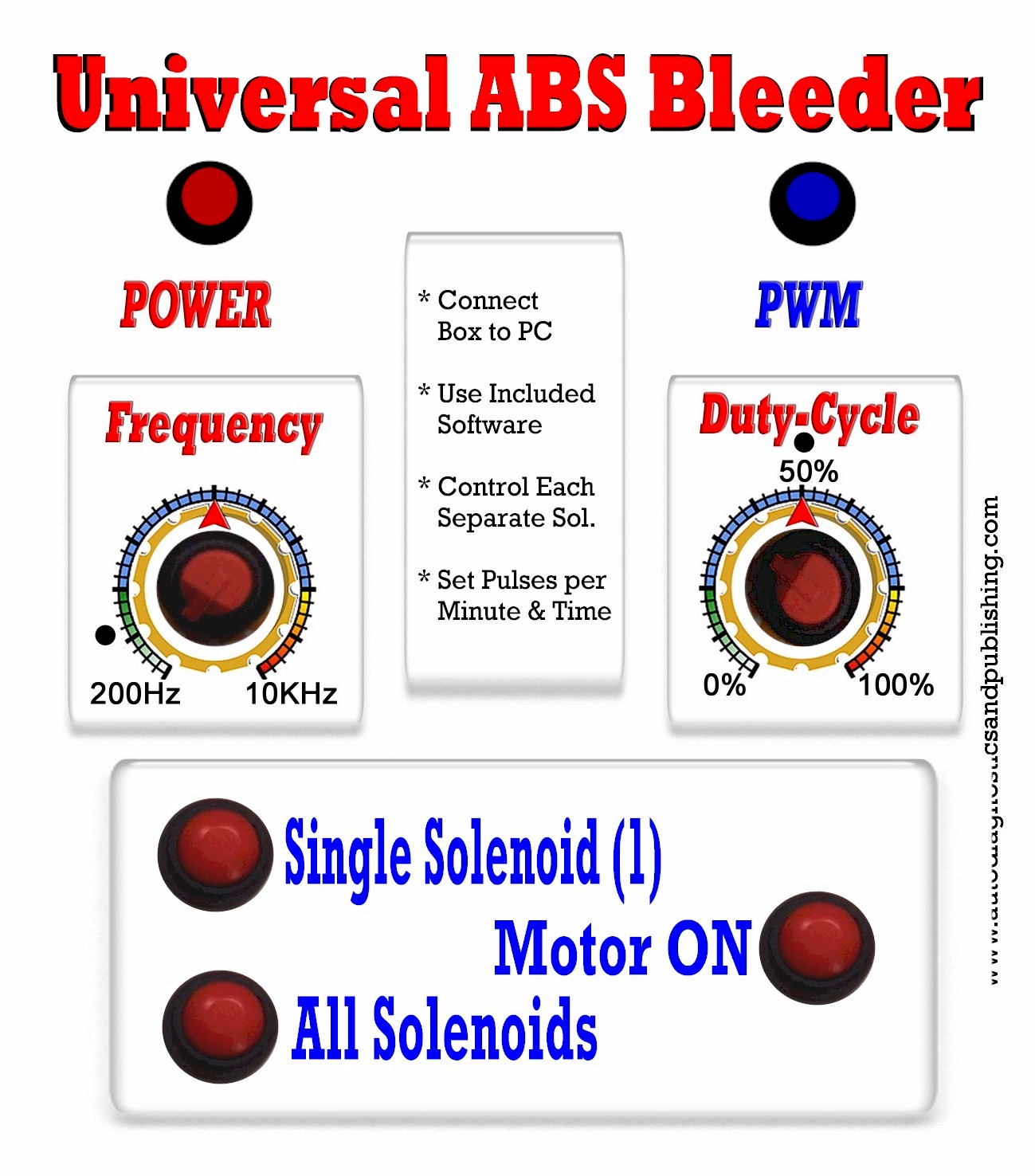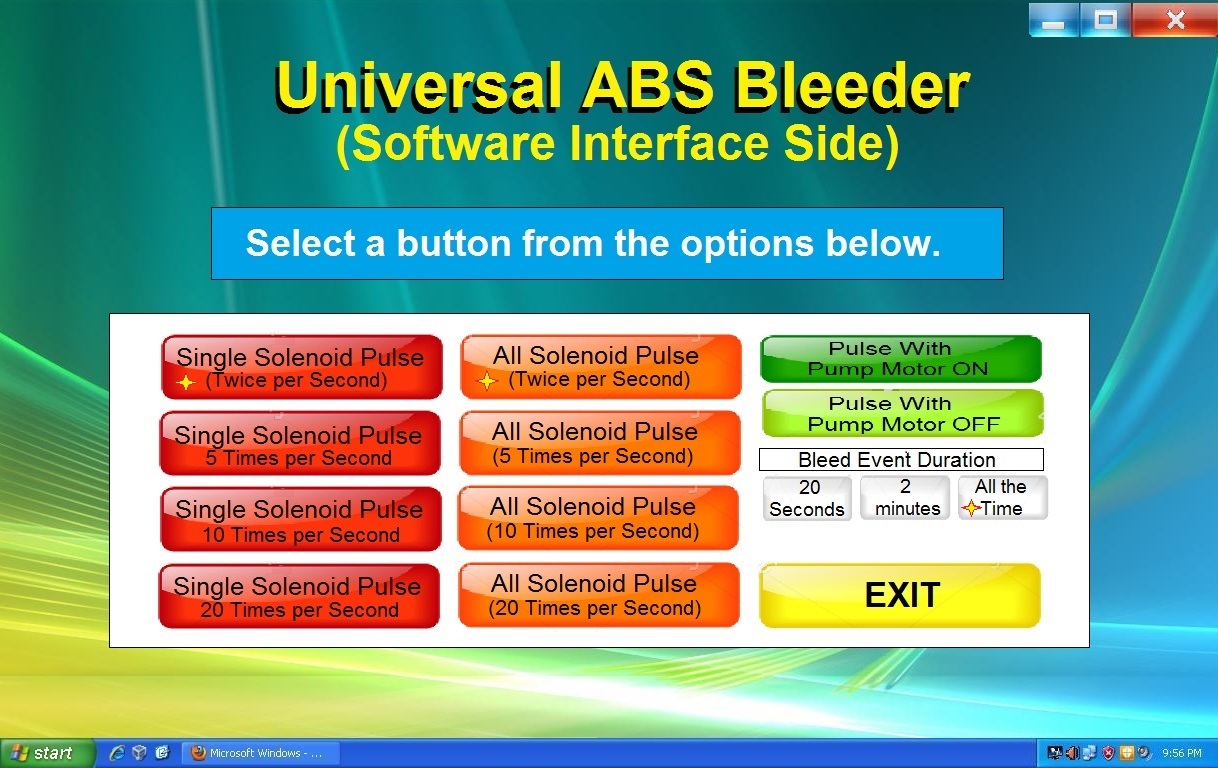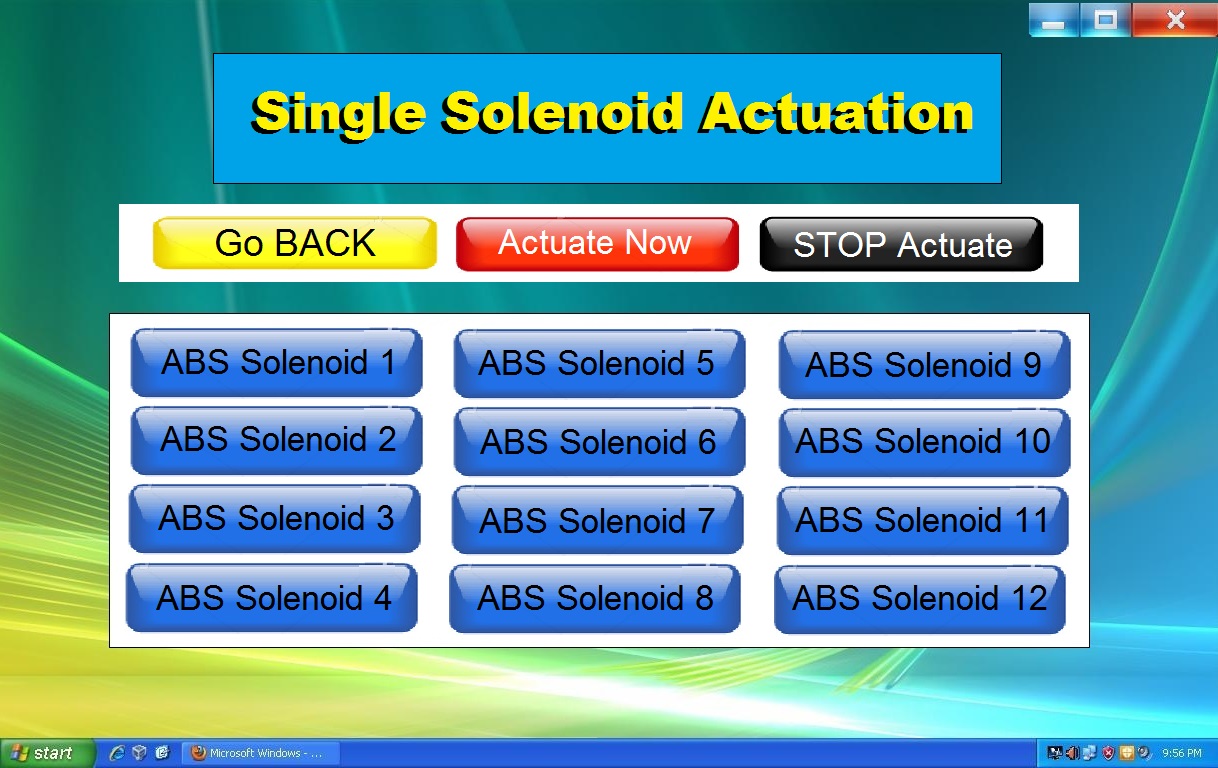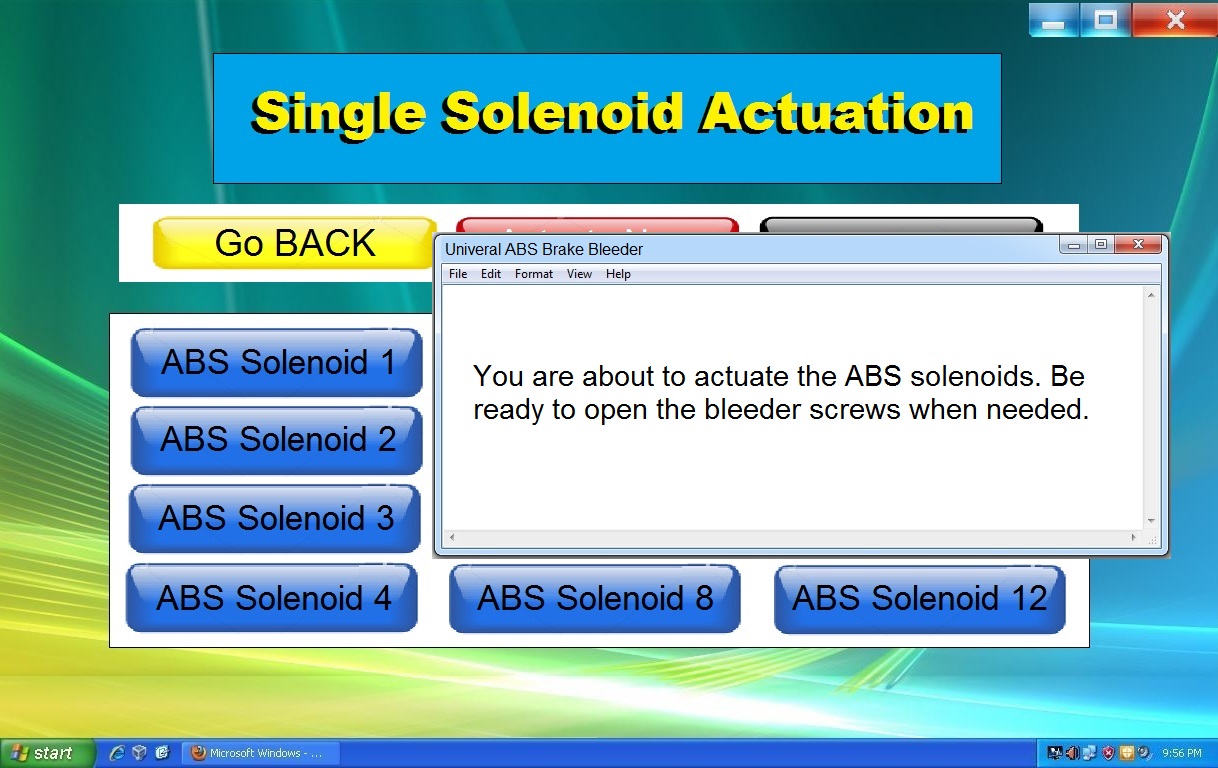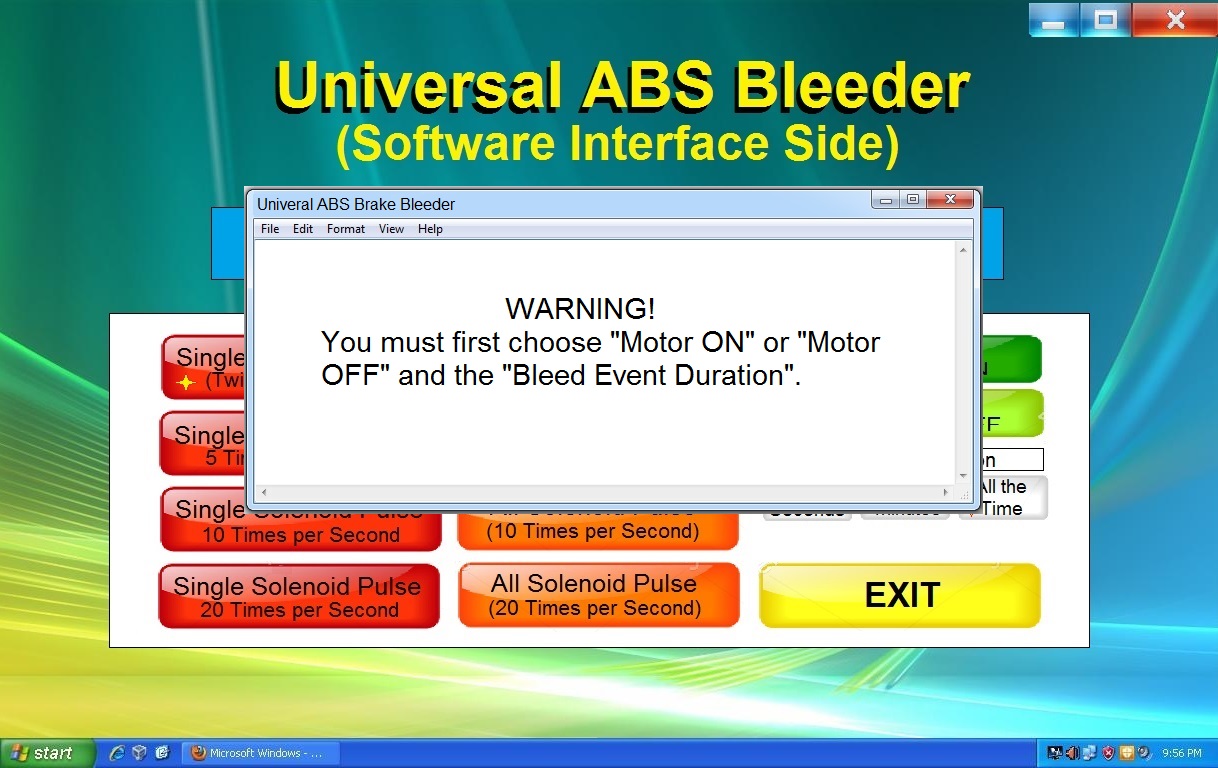Universal Automotive
ABS Bleeder-Tester (UABSB)
The Universal Automotive ABS Bleeder and Tester is the only one of its kind. Here's James Walker Jr. wrote about bleeding a modern ABS hydraulic unit, and I quote (go to the bottom of the page for the article) or Click Here...
As you can see, bleeding the ABS hydraulic module can be a time consuming or sometimes impossible issue, not counting rigging the system, whatever that entails. Hence we, at Automotive Diagnostics and Publishing came up with the solution.
NO SCANNERS, but a directly connected SOLENOID SYSTEM. Yes, that's right, the UABSB is two tings:
- A PC/Laptop based software and hardware ABS bleeder and hydraulic module diagnostic system.
- It has a handheld limited but versatile controller.
- It also connects to the PC/Laptop for expanded capabilities (see the software screenshots).
- It is independent from the vehicle's ABS computer and therefore has no effect in it.
- Because it's independent, you don't need to wait for the ABS module's go-ahead, so you have a code present, no troubles, just connect the UABSB's included solenoids and you're ready.
The UABSB is an independent system that's capable of bleeding and diagnosing ABS hydraulic issues. Read more below.
Universal ABS Bleeder-Hydraulic Tester Complete
(Reg. $1600.00) Introductory Price Below...
(Includes all cables, CD-ROM Manual and plastic carrying case)
Save lots and get a package deal.
(Domestic & International Shipping Available at checkout)
NOTE: Want to order more? See our Equipment-Package-Sets and save. Then check out securely.
(Note: We test all units before shipping, so allow 2 to 4 day for shipping + 2 days for Priority-Mail delivery)
Universal ABS Bleeder
The UBSB works much like a cow milking machine. It has 12 solenoid valves that can be actuated independently from the ABS Module or wiring harness. It is TOTALLY STAND ALONE. So, don't worry about damaging the ABS system, it is not even connected to it. See the Software Screenshots to get a better idea. It is also a stand alone system. Sometimes you don't want to connect the Laptop, you just need to actuate a single ABS Hydraulic circuit, so just "Remove the ABS Module" just 3 to 6 screws, and ready to go.
Click to enlarge...
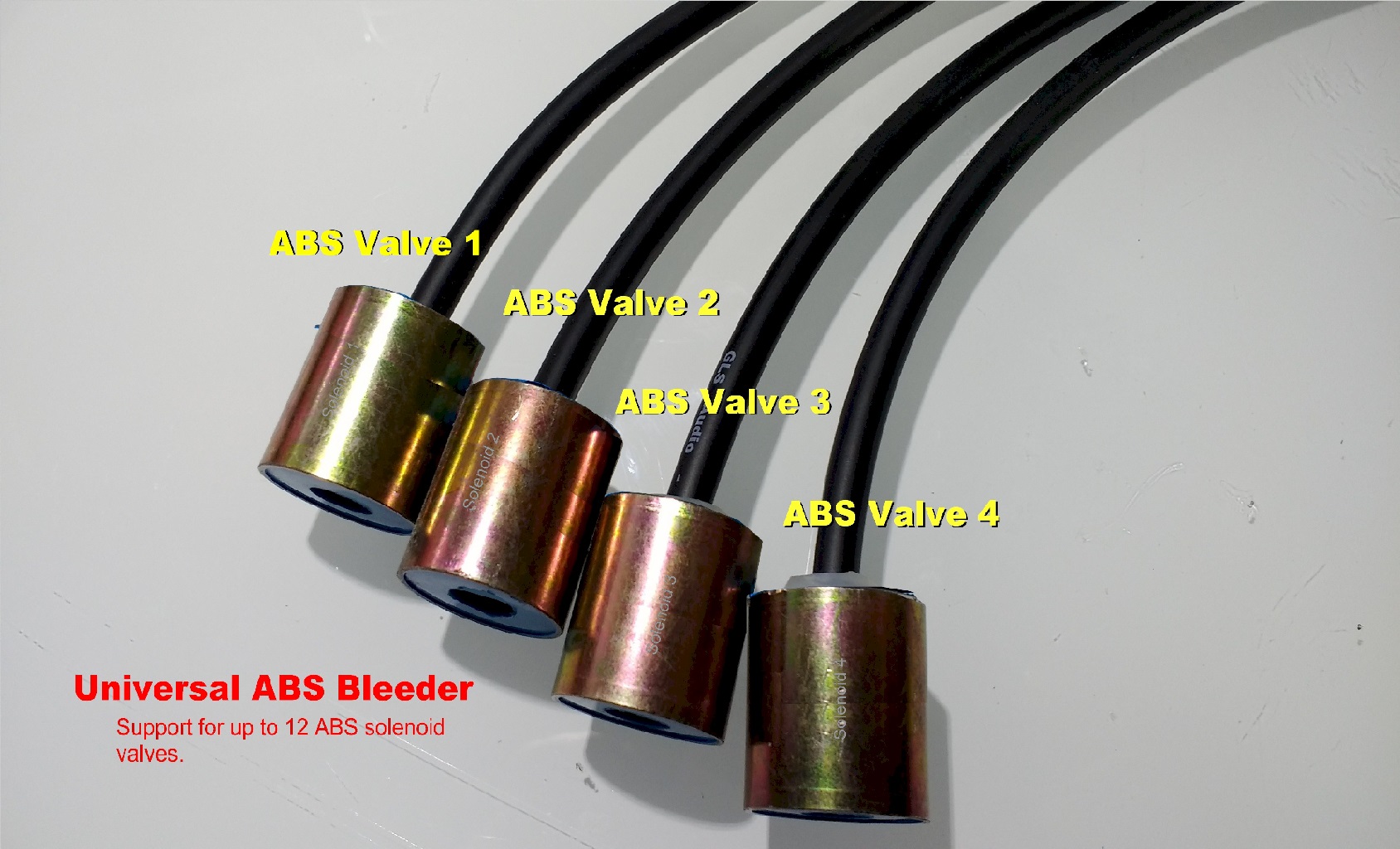
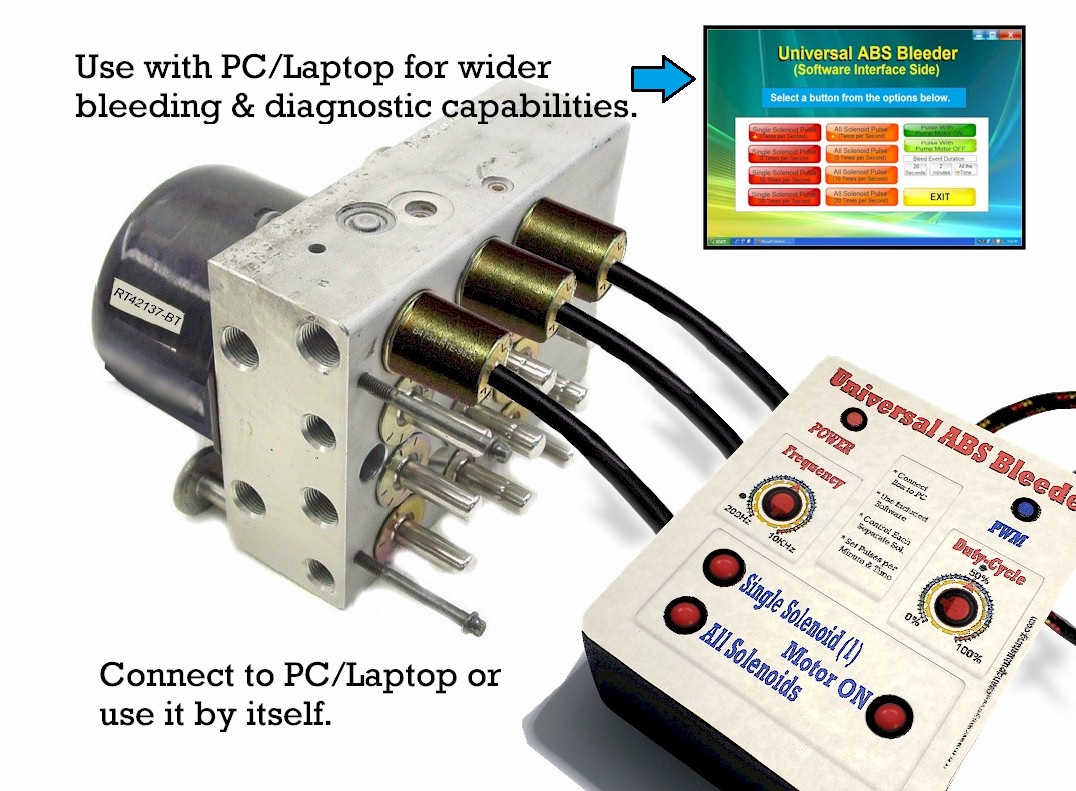
What You Get...
Included are the following:
- Software (we don't charge for future updates).
- 12 Solenoids to plug on the hydraulic units.
- Handheld unit, which is also connected to the PC/Laptop via USB (Laptop not included).
- Manual for the unit. (you may also need additional service manual/information such as Alldata or Mitchell).
All you need then is your brain and a PC or Laptop. Bleed and diagnose all ABS systems with this tool.
ARTICLE MUST READ
Bleeding Anti-lock Brakes…is it really as difficult as it sounds?
by James Walker, Jr. of scR motorsports www.teamscR.com
April 22, 2001
In general, whenever you are bleeding an ABS-equipped vehicle you can do so exactly as you would any other vehicle - stroke the pedal to pressurize the system, open a bleeder, close the same bleeder, and repeat. This does not change whether you are pressure-bleeding, vacuum-bleeding, or manual-bleeding. Just follow the same steps you normally would for a non-ABS vehicle and you're most of the way there.
Operative Word: Most
Now, with some ABS devices, you are actually done no matter what (Delphi's early ABS VI, for example). Bleed as above, and you are finished. Note that there are some special situations where the retailer will perform a diagnostic bleed of these early ABS units, but this is not within the scope of this article. Stop reading, and go get a drink.
However, other ABS devices have their own internal reservoirs (Bosch ABS5.3, for example) that are not a part of the primary brake circuit and are only opened to the rest of the circuit when the ABS is active. Now, if you just bled your system per the above technique and never again cycled your ABS, you would be fine. However, as soon as the ABS cycled - even for a few tenths of a second - the "old" fluid (which was never bled because it was hidden) would be dumped into the primary circuit. Not the end of the world, but you want fresh fluid everywhere, right?
The Factory Procedure
With these systems, the correct way to bleed the ENTIRE vehicle is to employ a Dealer service tool (it usually looks like a Nintendo GameBoy) that allows you to cycle the ABS valves and/or the pump motor WHILE you are bleeding the brakes. In effect, this allows you to open the hidden passages in order to purge the fluid completely. Fresh fluid is then drawn into the ABS unit, and the old stuff can be flushed away with the rest of the mess. Nothing to it.
The end result takes a little more time than a conventional bleed, and requires you use a little more fluid, but looks like this:
Step 1 - Manually bleed RR, LR, RF, LF brakes
Step 2 - Install service tool and cycle all valves and/or pumps
Step 3 - Manually bleed RR, LR, RF, and LF brakes againYou end up having bled the system twice, but this is necessary to ensure that fresh fluid - and NOT used fluid - is drawn into the unit the next time that the ABS valves (and/or pump) are cycled.
The 75% Answer
The last 25% of course is "does my car have these mysterious hidden passages?" That's for you to find out, but the following information should be useful in your quest for ABS knowledge.
As with any technology, manufacturers have produced several types of ABS over the years, and listing them all is simply not possible. In general, the most recent ABS product offerings - Bosch ABS5.7, Bosch ABS5.3, Delphi's DBC7 - all DO have the hidden passages and would require the procedure listed above. However, you cannot always rely on this generalization alone.
Our advice? Make a phone call to your local service department asking what their procedure is to bleed the brakes WHEN A NEW ABS UNIT IS INSTALLED (as opposed to when they change a caliper). If they claim that they need to cycle the ABS, it's a good bet that you need to also.
But What If I Don't Have The Dealer Service Tool?
If you really feel the need to cycle the valves, but do not have access to a service tool (or if the dealer is not willing to loan theirs) you COULD just replace Step #2 above with "go driving and slam on the brakes a few times to make the ABS work" to purge the used fluid from the unit. This is usually NOT the most efficient nor socially responsible solution, though it seems to work just fine. You still need to bleed the car a second time, but it saves you from procuring the service tool.
But what about when I'm at the track?
Remember that this is the process for FLUSHING AND FILLING YOUR ENTIRE SYSTEM. If you are only replacing a caliper or performing any other operation where you are simply trying to bleed vapor and/or used fluid from the wheel-end components (like after a hard day of lapping,) you need only to bleed the brakes as you normally would...ala Step #1 above.
There is no reason to cycle the ABS if all you are simply trying to do is get vapor out of the calipers. For this reason, if you flush and fill your system only once per year, the rest of the time you will not need to perform the ABS cycling procedure…or worry about the service tool at all.
Thanks to James Walker, Jr. of scR motorsports www.teamscR.com for this article.
copyright
www.autodiagnosticsandpublishing.com, Mandy Concepcion

